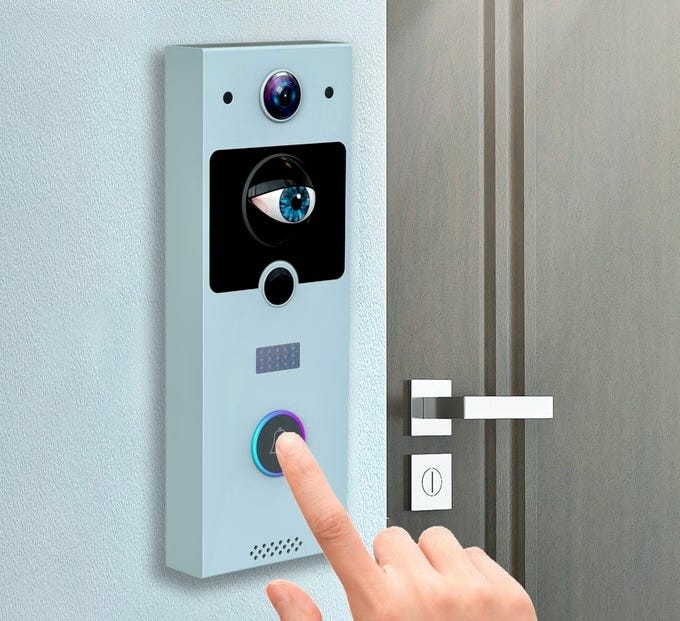Is Amazon really making augmented reality glasses?
Job postings reveal that Amazon is building an augmented reality product. But will they be glasses — or something else?
Augmented reality is the future of the human experience. Five years from now, it will be normal for pertinent virtual objects, characters, holographic people and data to appear to us as we move around and observe things in the real world.
That’s why so many companies are working on and investing in augmented reality products, including Apple, Google, Meta, Microsoft, Magic Leap. Snap, Ray-Ban, Vuzix, Bose, Razer and many others.
News hit this week saying that Amazon is hiring to staff a team that will develop an augment reality product. Job listings spotted by Protocol reveal active hiring for researchers, scientists, designers and program and product managers to build what Zuckerberg might call a metaverse product.
Amazon in March opened a new division called Futures Design, which is a lab headed by Kharis O'Connell, a former designer at an AR headset maker called Meta View. O'Connell was involved in the creation of Google’s AR operating system.
It’s impossible to dismiss Amazon as a competitor in the consumer electronics space. While the company has had failures, including the disastrous Fire Phone, it’s also one of the few companies to beat Apple in a major category. Amazon’s Echo home smart speaker shipped in 2014, four years before Apple shipped its HomePod competitor. The company also shipped the first home indoor security drone and the first major home robot, called Astro.
Amazon isn’t effing around, and must be taken seriously when it targets consumer electronics.
In fact, Amazon is already a player in AR. The company offers an AR service called Amazon Augmented Reality, which enables AR experiences when customers point a smartphone running their Amazon AR app on special QR codes printed on Amazon packages.
Amazon’s main app also augments reality — customers can place chairs, tables and couches as virtual objects in their actual homes when viewed through the Amazon app.
The job ads reveal Amazon’s intention to create “XR/AR devices” based on “advanced sensing, display, and machine learning technologies.” Design candidates must be able to "think spatially, with 3D design experience in motion design, animation, AR/VR, games, architecture, or industrial design" to work on "the core system interface along with end-user applications spanning from multi-modal interfaces to 3D AR entertainment experiences.”
One ad says “You will develop an advanced XR research concept into a magical and useful new-to-world consumer product.” (“New-to-world” means means that they intend to build something in a category that has never existed before.) Some listings call it a “smart home" device.
Let’s break down the pieces of this product:
XR/AR (which is curious, because XR includes AR, so why specify AR?)
AR entertainment (they dropped XR when talking about entertainment)
New-to-world, meaning no such product currently exists on the market like it
3D
Multi-model
Operating system
Applications
Smart home device
Let’s also add two more facts to our thinking here: First, major tech companies try to hire people without revealing what they’re up to. The jobs they list aren’t a match for the positions they may hire — the job ads merely need to beat the right bushes to get top people calling.
And second, Amazon loves augmented reality with projection. Amazon invented and now sells an interesting children’s product called Glow, which combines Zoom-like video calls with projected interactive activities. The projections can be manipulated by kids as if the projections were a touch screen, and the person on the other end of the video call can see the activity on a tablet.
In general, projection AR uses lasers, artificial intelligence and other technologies to creation the illusion that refrigerator or cabinet doors are transparent. They can project interactive instructions or controls on the outside surface of appliances. They can turn a dining room table into a giant-screen touch tablet. (Microsoft Research has done a lot of thinking about projection AR. And over the years Microsoft has produced videos showing what that looks like, including this video.) Combined with laser light and artificial intelligence, projection AR could become very cool.
But it’s also true that Amazon is not opposed to AR glasses. Amazon already sells non-visual augmented reality glasses called Echo Frames that work through audio (they’re basically Amazon Echo devices for your face; pictured at the top of this page). And the company has patents for AR glasses.
Amazon’s job ads reveal one important fact: They’re planning something beyond AR glasses.
We know this because they repeatedly mentioned a “new-to-world” device. AR glasses already exist, so mere glasses are not new-to-world. Also: They mentioned a “smart home” product.
What Amazon wants
What Amazon really wants is to see the inside of your home. They want scanners, sensors and cameras mapping every square inch, and AI figuring out what you’ve got, who is there and what’s going on in your life. This knowledge will let them target ads and promotions and Amazon offers at you that are so relevant that you simply must buy. They want to beat Google and Meta at the game of surveillance capitalism.
That’s what their Fire Phone was all about, and also what the Astro robot is all about: putting 3D mapping cameras inside your home to go with the listening devices already there (in the form of Amazon Echo and other Alexa-based devices).
Projection AR achieves this at least as well as glasses.
So at this point, my prediction is that Amazon is really working on three basic areas of augmented reality:
Augmented reality glasses
Augmented reality interactive projection for the home
Building AR into existing products like future Echos and future Astro robots.
Of these, the push for projection is by far the most interesting, because it’s something that’s been theorized, developed, showcased and talked about for years, but that no company has shipped as a mainstream product for the home.
So while Amazon will probably make AR glasses, their big play will probably be advanced projection-based systems for achieving AR in the home without glasses.
Mike’s List of Brilliantly Bad Ideas
1. This creepy doorbell cam keeps an eye on your visitors
A company called Doggole came up with what they call the Smart Eye Doorbell. It's just like a Ring Video Doorbell, but with one difference: It has an "artificial biological eye," "as if it has a soul," according to the company. They also say that the motion of the eye, which tracks people via an infrared sensor is like "seeing inside the visitor’s soul." Um, no. Just no.
2. Here comes the first robot rat
Roboticists at the Beijing Institute of Technology invented a rat robot. Called SQuRo (small-sized Quadruped Robotic Rat), the robotic rodent has rat-like flexibility and agility to crawl through tight spaces in urban environments. It’s designed to help in disaster zones by crawling through pipes and scampering over rubble outfitted with sensors, including cameras. And like the real life New York pizza rat, it can carry relatively heavy objects.
3. Finally, a super-yacht that flies
Billionaires and oligarchs love giant yachts because it’s the best way to maintain freedom of movement and privacy, while also flaunting wealth. Now, a Swiss company called AirYacht has envisioned the ultimate super-yacht — one that floats through the air. Also called AirYacht, this boat-like structure attaches to a Hindenburg-like blimp, becoming its passenger module. But then cables can lower the boat into an ocean or lake, where it becomes a normal super-yacht — or on land, where it becomes a three-story, six-room house. The craft is made eco-friendly, according to the designers, because it has no engine. When it’s in the water or on land, it just sits there. They intend to “ship” this thing in four years.
Mike’s List of Shameless Self Promotions
Remote work and the end of super-commuting
Why food quality is everything
Remote work makes it more important than ever to trust zero trust
Enterprise AR will be dominated by Apple and Magic Leap
Blast from the past: what the Y2K bug reveals about cybersecurity today







